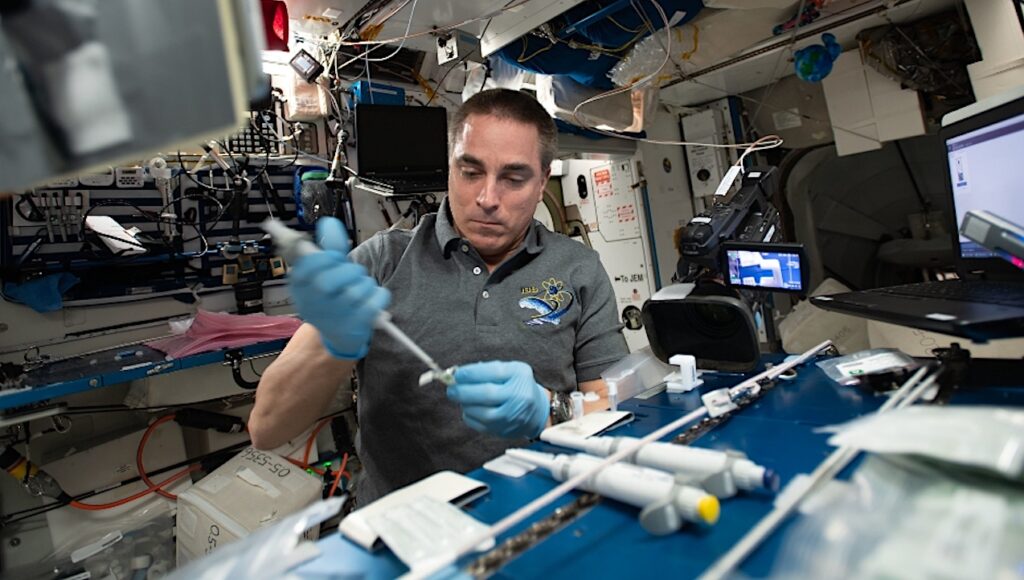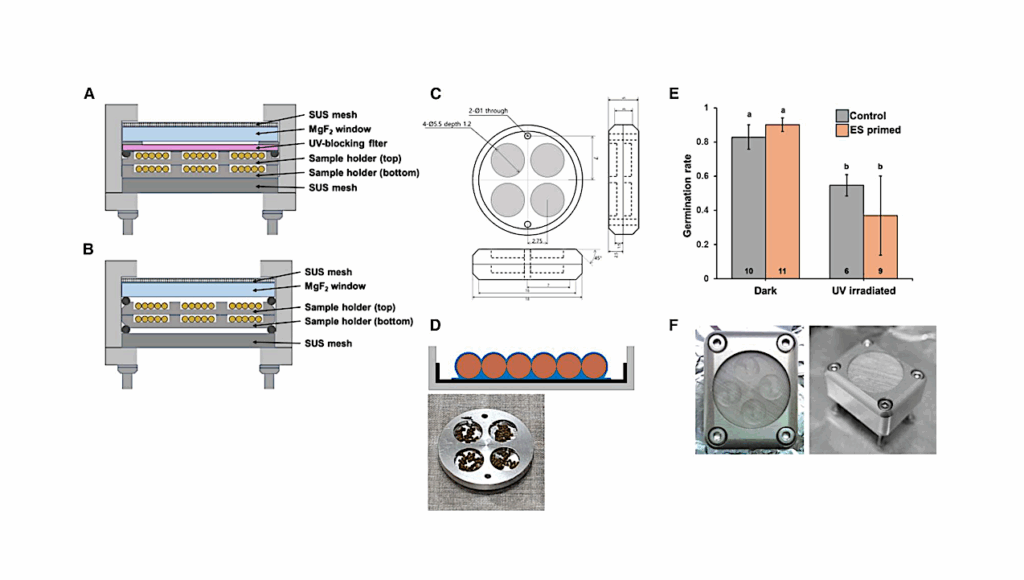National Academy of Sciences Decadal Survey on Biological and Physical Sciences Research in Space 2023-2032

The National Academy of Sciences Decadal Survey on Biological and Physical Sciences Research in Space 2023-2032 will review the state of knowledge in the current and emerging areas of space-related biological and physical sciences research and generate consensus recommendations for a comprehensive vision and strategy for a decade of transformative science at the frontiers of biological and physical sciences research in space.
The study report will help NASA define and align biological and physical sciences research to uniquely advance scientific knowledge, meet human and robotic exploration mission needs, and provide terrestrial benefits.
Call for White Papers
June 17, 2021
The Decadal Survey on Biological and Physical Sciences Research in Space 2023-2032 is now accepting white papers. Topical white papers should be received by October 31, 2021 and Research Campaign white papers should be received by December 23, 2021. Please read the letter with white paper specifications and submission forms.
– Submit a Topical White Paper
– Submit a Research Campaign White Paper
– View Submitted Topical White Papers
– View Submitted Research Campaign White Papers
Statement of Task (original source)
The National Academies of Sciences, Engineering, and Medicine will appoint a decadal survey committee to carry out a decadal survey of biological and physical sciences research in space. The study will generate consensus recommendations to implement a comprehensive strategy and vision for a decade of transformative science at the frontiers of biological and physical sciences research in space. The results of the study will assist NASA in defining and aligning biological and physical sciences research to uniquely advance scientific knowledge, meet the needs of human and robotic exploration missions, and provide terrestrial benefits.
The committee, with input from study panels covering the breadth of biological and physical sciences in space, will carry out the following tasks:
1. Conduct a review of the current state of knowledge in the major and emerging areas of space-related biological and physical sciences research;
2. Identify the most compelling science challenges and frontiers to be pursued utilizing spaceflight environments and analogues of spaceflight conditions that will enable scientific discovery, address the needs of space exploration, and/or result in applications on Earth;
3. Develop a comprehensive research strategy to advance the frontiers of biological and physical sciences research in space that will include identifying, recommending, and ranking the highest priority research activities — taking into account for each activity the scientific case, international and commercial activities, and opportunities for partnerships. Where feasible and useful, such factors as timing, cost category and cost risk, technical readiness, and technical risk, will also be considered. The strategy should:
a) Recommend approaches to facilitate the development of a robust, resilient and appropriately balanced program of biological and physical science space research that will enable scientific discovery, address the scientific and technological needs of space exploration and/or result in applications on Earth;
b) Identify facility and platform capabilities and environmental requirements for each of the recommended research activities as appropriate, including facilities or capabilities not currently available but which could be developed in the future;
c) Assemble notional proof-of-concept research campaigns, where appropriate synergies may be achieved, that address identified prioritized research activities as part of complex or multi-disciplinary missions or mission sets including those that make use of cost-effective ground analogues and sub-orbital flights.
d) Utilize the Technical Risk and Cost Evaluation (TRACE) process on large recommended spaceflight projects (those costing more than $100M) and on any other projects selected by the Committee.
e) Organize the recommended research activities, associated facilities and platforms, and proof-of-concept research campaigns into broad cost categories in order to assist NASA’s understanding of the top-level scientific performance and resource options.
4. Recommend broad decision rules, where appropriate, so that NASA can consider accommodating significant deviations in the projected budget or changes in priorities precipitated by new discoveries or new commercial achievements.
As part of its review the committee will consider and address relevant cross-cutting research needs and key aspects of the infrastructure–including NASA, commercial, and international programs and plans–that may affect the conduct of research. Potential infrastructure topics that will be considered include:
– Where NASA capabilities or ability to assume high risk enable it to uniquely support the research enterprise, and where support roles might feasibly be transitioned to commercial providers,
– Roles played by NASA’s biological and physical sciences program in supporting the conduct of space research, particularly in light of the mission and capabilities of the International Space Station (ISS) National Laboratory, limited lifetime of the ISS, and the prospect of commercial platform(s) in low Earth orbit (LEO),
– Existing and potential new research synergies between NASA and other U.S. government agencies, opportunities for collaborative research that are relevant to science priorities between Science Mission Directorate’s science divisions, as well as with commercial entities and international partners; and
– The current position and expected evolution of the U.S. relative to other countries in the areas covered by the study, including the uniqueness (or lack thereof) of U.S. efforts.
Considerations
In considering the emerging availability of commercial platforms, facilities and services for research in LEO and beyond, the committee should include an awareness of the space-related programs within other agencies and non-government organizations. While the focus of the committee will be on the next decade, the committee may also identify potential research objectives that extend beyond that timeframe. This study should build upon the findings and recommendations of previous National Academies’ studies. As part of its work, the committee will also:
– Describe how the identified research objectives could produce knowledge, enable exploration activities, or provide benefits to terrestrial and other applications;
– Recommend criteria for identifying and updating a high value research portfolio that is enabled by exploration and/or enables exploration;
– Apply these criteria to recommend a high value research portfolio that is enabled by exploration and/or enables exploration.
Scope
When selecting biological and physical science disciplines that will be reviewed in this report, the committee will generally consider discipline areas covered in the previous decadal report, as well as emerging areas of interest. However,
the committee will not review the discipline areas of NASA’s program of risk identification and mitigation for astronauts except to the extent that biological research in microbiology, animal biology or plant biology could inform that program. Translational research, innovative methods and procedures, and pre-clinical studies (particularly those involving understanding biological processes, normal or pathophysiological adaptation to microgravity, and mechanisms of action) may be included.
Astrobiology








